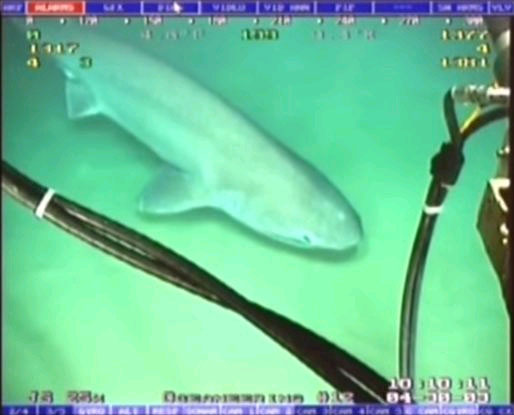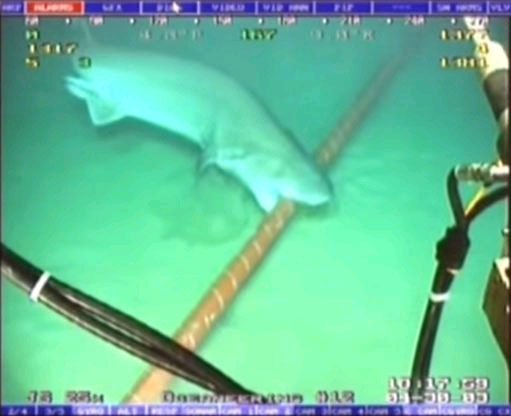Google 'marine' white shark sharks
A white shark caught using a jaw of a Google fiber optic cable. It is unclear why the shark acted like that.
A video recorded by professional divers shows the white shark taking sharp teeth slowly chewing on the cable.


The shark hovered above, then plunged down to chew the cable.Photo: Youtube
After watching the video, Google Corporation had to send professional divers to the seabed, using Kevlar - the material used in bulletproof jackets - to wrap up more than 160,000 km of fiber optic cables to avoid the arrival of sharks. after attack.
The cable that Google uses is made of fiberglass, transmitting data across the ocean through a laser beam. Google's product manager said the material offers 100 times faster connection speeds than copper.
If the above fiber optic segments are broken, the Internet in many countries may be slowed down, more seriously than disconnected.
One cannot find the reason why sharks act like that. In 1985, a shark's tooth was discovered deep inside a test fiber optic cable off the coast of the Canary Islands.
Then, in 1987, the fiber-optic cable connecting the US, Europe and Japan was also bitten by sharks but left no serious consequences.
At that time, some people wanted to find out why sharks like 'preening' a cable, by inserting a piece of cable into a shark's throat, see how it reacts but the animal does not show interest. interesting.
You should read it
- The Vietnam Internet will go international on AAG submarine cable to be restored on 9/11
- Why do sharks like to bite sea cable?
- Will the global Internet be broken if all of the undersea cable lines are attacked?
- APG fiber optic cable is having trouble, international traffic is reduced by 50%.
- AAG marine fiber optic cable has a fifth incident in 2017
- Why are marine optical cables constantly breaking?
 Facebook confirms it is testing comments with stickers
Facebook confirms it is testing comments with stickers Why does Apple occupy a small market share and still have big profits?
Why does Apple occupy a small market share and still have big profits? Demand for smartphone applications is declining
Demand for smartphone applications is declining LG will provide the screen for iPhone 6
LG will provide the screen for iPhone 6 How to kill time while waiting for iPhone 6
How to kill time while waiting for iPhone 6 YouTube 'crashed' over 2 hours
YouTube 'crashed' over 2 hours